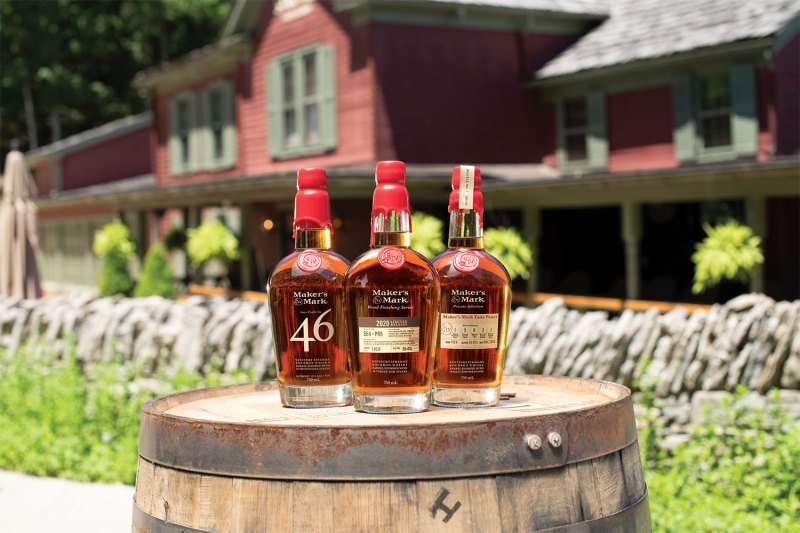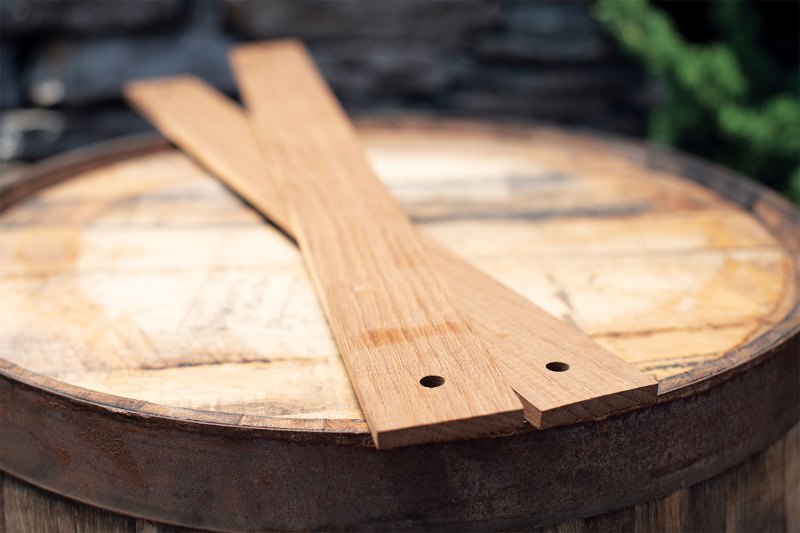
Last year, Maker’s Mark released its first nationally available limited release edition of its Wood Finishing series, which joined the ranks of other wood stave-finished bourbons from the distillery like Maker’s 46 and Private Selection. The bourbon had the arguably inartful name of Maker’s Mark Wood Finishing Series 2019 Limited Release: Stave Profile RC6, based on the name of the staves that were placed in the barrel as part of the whiskey’s finishing process. This September, the distillery is releasing the second edition, which rolls a bit easier off the tongue: Maker’s Mark 2020 Limited Release.
Two different staves were used for this year’s bottling, the result of about a year’s work with Independent Stave Company — SE4, made from virgin French oak cooked at medium heat to bring out flavors of caramel, and PR5, made from virgin American oak and cooked slow and low to augment the vanilla notes.

“Since the introduction of Maker’s Mark 46, wood staves have become our tool of choice for unlocking and amplifying natural flavors already present in our classic Maker’s Mark – always purposefully and with a specific taste vision in mind,” said Jane Bowie, Maker’s director of innovation, in a prepared statement. “Where Maker’s Mark 46 was about creating a ‘bolder’ Maker’s, and the 2019 release was all about boosting the notes of baking spice and fruit, our 2020 Limited Release has been a quest to amp up those rich vanilla and buttery caramel flavors that typically stem from our unique approach to seasoning our barrel wood outside for a full year.”

Bowie believes the use of two staves this year instead of one was crucial to obtaining a flavor profile that was innovative but still recognizably Maker’s Mark. During a Zoom media tasting a few months ago, journalists had a chance to taste a few different whiskeys that were part of the experimentation process — some considered to be failures due to flavors that were slightly off, and some that were elements of the production process that led to the final product. The resulting whiskey, though, was ultimately made in the same way as all of the Wood Finishing series – cask strength Maker’s Mark is put into barrels with the staves added to rest for a period of time in the distillery’s limestone cellar. This year’s release was bottled at 110.8 proof, and will be available next month around the country for $60 until bottles are sold out.
Editors' Recommendations
- Hudson Whiskey Relaunches with New Look, New Whiskey
- Wild Turkey Releases Two New Limited Edition Whiskeys
- Kentucky’s New Riff Distillery Has Released a Peated Bourbon and Rye
- Tincup Releases New Rye Whiskey
- Pittsburgh’s Wigle Whiskey Releases New Spirits




